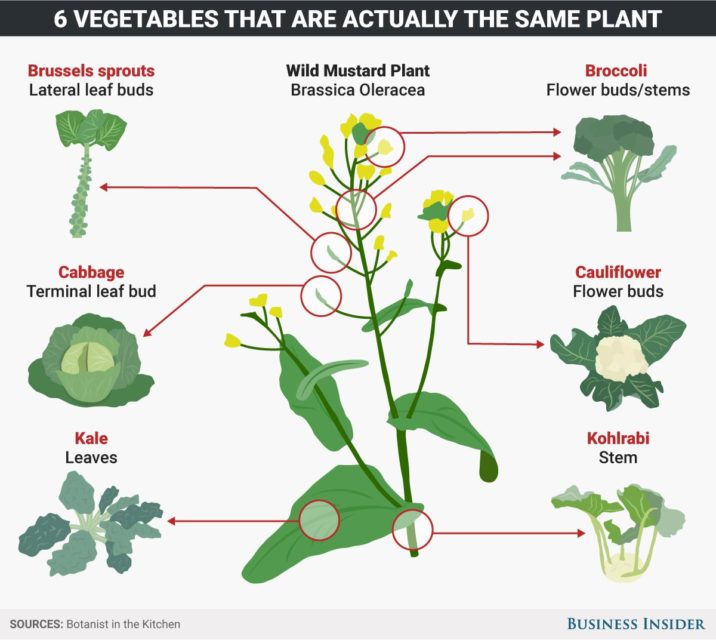The vegetable pushers are clever: they can disguise vegetables in such a way that you don’t realize where they came from. A prime set of examples are all variations of a common Mediterranean weed called Brassica oleracea:
Brassica is also known as the wild mustard plant.
“The wild plant is a weedy little herb that prefers to grow on limestone outcroppings all around the coastal Mediterranean region,” Jeanne Osnas, a researcher at Purdue University who blogs as “The Botanist in the Kitchen,” writes of Brassica oleracea.
“It is a biennial plant that uses food reserves stored over the winter in its rosette of leaves to produce a spike of a few yellow flowers at the end of its second summer before dying. Those nutritious leaves make its domesticated derivatives important food crops in much of the world now.”
This one plant was selectively bred over hundreds of years to create dozens of wildly different vegetables.
By selecting and breeding plants with bigger leaves, or larger buds, the various cultivars were created.
[…]
The amazing evolution of Brassica oleracea goes to show that humans have been tinkering with the genetics of our food – creating what are now known as genetically modified foods, or GMOs – for a very long time.
New lab techniques just let us do that in a more precise and directed way.




